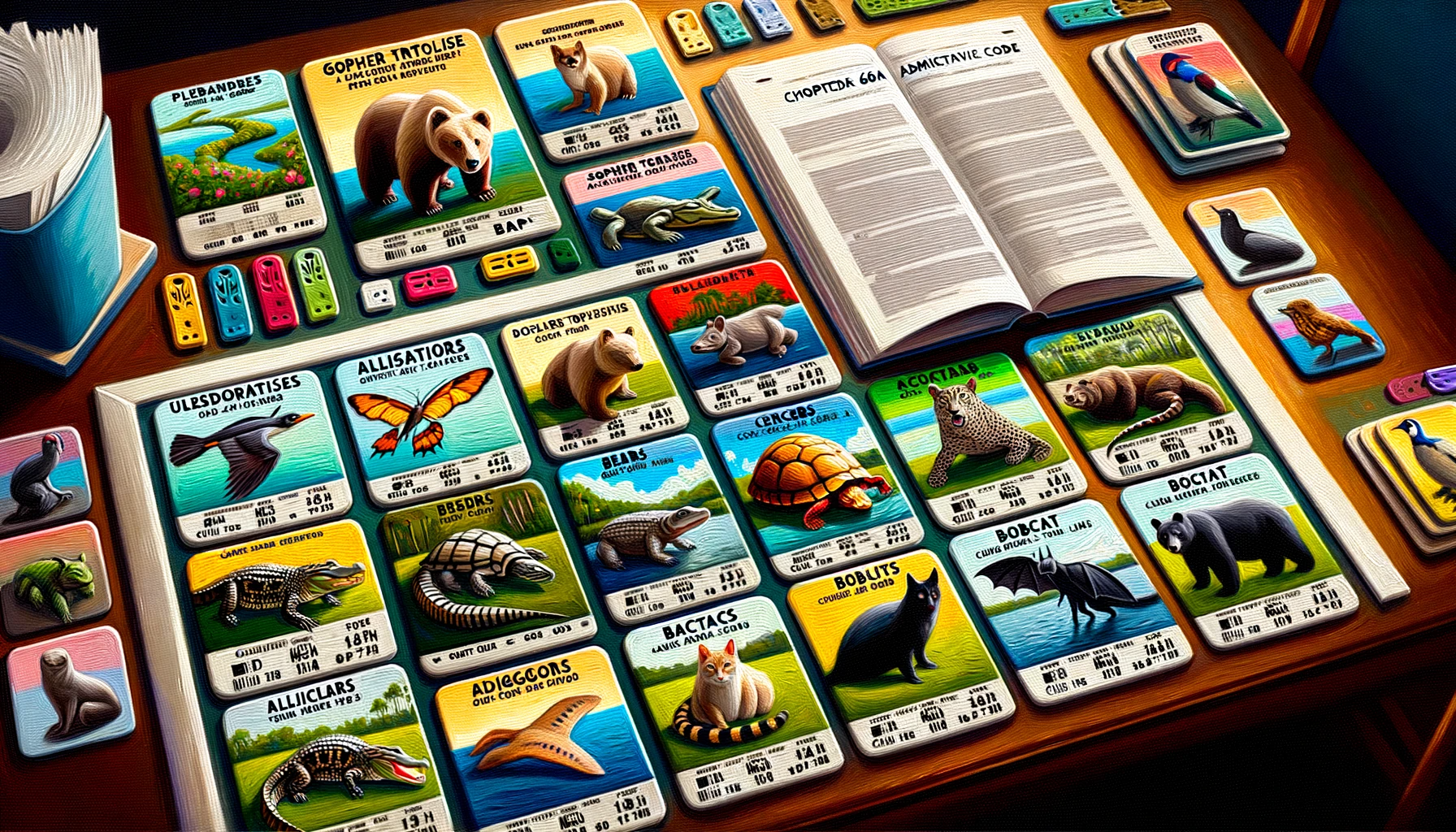Florida Permits and Regulations for Wildlife Removal Guide
In the sun-soaked wilds of Florida, the bustling wildlife is as much a part of the scenery as the golden beaches and crystal waters. However, when the local fauna decides to take up residence in your attic or garden, it could spell trouble. While some might see a raccoon as a cute visitor, others see a midnight marauder in the trash. Before you consider shooing away Rocky Raccoon or his wildlife pals, it’s crucial to understand the permits and regulations surrounding wildlife removal in the Sunshine State.

Permits for Special Wildlife
Florida takes its wildlife seriously. The Florida Fish and Wildlife Conservation Commission (FWC) requires permits for any interaction with state-listed species including endangered, threatened, or species of special concern. For example, removing venomous reptiles and pythons requires a captive wildlife permit. It’s all outlined in Chapter 68A of the Florida Administrative Code, your go-to guide for the legalities of wildlife removal.
For example, you need a permit to remove:
- Gopher tortoises
- Alligators
- Deer
- Bears
- Bats
- Bobcats
- All birds protected under the Federal Migratory Bird Treaty Act
- State-listed or federally-listed species of special concern, threatened, or endangered species
Nuisance Wildlife: A Peculiar Term
The term “nuisance wildlife” might evoke images of squirrels having a field day in your attic insulation, but it’s not just about the species, it’s about behavior. In Florida, an animal is termed a nuisance based on its behavior, not its species. So, before labeling the friendly neighborhood squirrel as a nuisance, consider its actions.
Permits for Nuisance Wildlife
Depending on the species and situation, different permits are available. From handling venomous reptiles to particular bird species, there’s a permit for that. Unique permits like the Gun/Light at Night Permit or the Deer Depredation Permit are tailored for specific situations, making the regulatory landscape a bit of a jungle.
he following permits are required for the removal of nuisance wildlife in Florida:
- Gun and Light at Night Permit: This permit authorizes you to use a gun and light at night to take depredating wildlife (beaver, bobcat, fox, possum, rabbit, raccoon, otter, skunk, or nutria). You do not need this permit to take wild hog, coyote, armadillo, black or Norway rat, and house mouse with a gun and light during non-daylight hours.
- Bird Permit: This permit is required for the take of any state-listed species or any bird species protected by the federal Migratory Bird Treaty Act (MBTA). This permit is available for individuals who do not have a pest control license or certain FDACS certifications (Section 482, Florida Statutes) to use a bird trap to remove non-native nuisance birds.
- Gopher Tortoise Permit: This permit is required to remove gopher tortoises from your property.
- Alligator Permit: This permit is required to remove alligators from your property.
- Deer Permit: This permit is required to remove deer from your property.
- Bear Permit: This permit is required to remove bears from your property.
- Bat Permit: This permit is required to remove bats from your property.
- Bobcat Permit: This permit is required to remove bobcats from your property.
You can apply for any of these permits online or by contacting the FWC at (850) 488-4673.
It is important to note that you do not need a permit to remove nuisance wildlife, such as raccoons, squirrels, and snakes, from your property. However, you must follow all applicable laws and regulations, such as using humane methods of removal and disposing of dead wildlife properly.

Gun/Light at Night Permit: A Closer Look
This permit is a handy one for landowners or their designees when dealing with depredating wildlife at night using a gun and light. Though, it’s not required for taking wild hog, coyote, armadillo, and a few other critters during non-daylight hours.
General Regulations: A Brief Run-Down
Wildlife removal should be the last resort after all proactive measures have failed. Having a plan before attempting to trap or remove wildlife is crucial, targeting the individual animal causing damage rather than its entire species.
Consulting the Local Authorities
When in doubt, consult with local FWC offices or the Florida Department of Agriculture and Consumer Services for specific permit requirements, especially for protected wildlife or engaging in activities.
Specific Seasons for Wildlife Removal
No specific seasons for wildlife removal exist in Florida, but certain restrictions apply. For instance, removing baby alligators from their nests is a no-go.

Finding State-Specific Regulations
For a deep dive into state-specific regulations, a visit to the FWC website or a call to (850) 488-4673 will serve you well. Your local parks and recreation department or fish and game commission are also valuable resources.
Wrapping It Up
Navigating the wild regulatory waters of wildlife removal in Florida can be daunting. However, armed with the right information and permits, you can tackle the task at hand responsibly. Remember, when in doubt, it’s always a good idea to call in the professionals, like us at WildPestPros.com, to ensure a safe and legal wildlife removal process.
Now, whether you see the wild side of Florida as a friend or foe, understanding the legal landscape is key to coexisting peacefully with our furry, feathered, and scaly neighbors.
